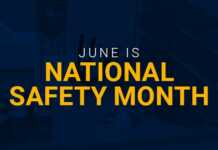Every day, employers across the United States are faced with the fact that their workforce is aging.
For years, employers have celebrated stable employment numbers and low turnover; however, the celebration has now turned to concern over how to protect the health and well-being of their experienced, but aging workforce.
Safety among aging team members is a subject every organization faces, especially in today’s economic environment, where employees routinely prolong retirement to make ends meet. We are often asked how to best protect this age group from accidents and injuries. The answer is two-fold.
First, ensure that all employees, regardless of age, are fit and capable of performing their job. A written job description is essential for every position. Second, support and promote a healthy workplace. The physical challenges that accompany aging (decrease in strength, flexibility, range of motion, vision, and sense of balance) can be offset by promoting a culture of health and safety in the workplace.
Where do you start? Enlist your Human Resources team to help ensure your job descriptions are up to date and talk to your team members about health and wellness. Here are some great wellness tips that apply to all employees, but are especially important to your older, more experienced employees. Advise them to:
- Get out and exercise at least 30 minutes every day. Walking is great exercise!
- Eat right. Educate your staff using the USDA resources for MyPlate. The traditional “food pyramid” has been updated, and chances are most of your staff isn’t up to speed on the new recommended daily food allowances.
- Exercise your brain by playing games, reading, and mentoring.
- Stay socially active. Research from the University of Austin Texas shows that “…older adults who spend more time interacting with a wide range of people were more likely to be physically active and had greater emotional well-being“*
- Tell you about problems and problem solve with you about different risks and concerns they have.
- Get a routine physical. People should see a physician, dentist, and eye doctor at least annually.
- Practice safety at home. People who do practice safety at home are likely practicing safety at work.
- Understand, acknowledge, and respect their limitations. Not everyone ages at the same rate. According to the Center for Disease Control, at age 50, most people have some limitations.
* University of Texas at Austin. “Interacting with more people is shown to keep older adults more active.” ScienceDaily. ScienceDaily, 20 February 2019.

















